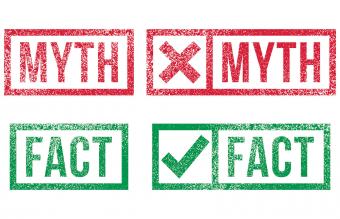
Regressive autism, also called late onset or acquired autism, is differentiated from other ASD types primarily due to its pattern of onset. The symptoms of classic autism or other early onset forms of ASD generally begin to show themselves within the first year or two of life, present from birth in many cases. On the other hand, those who develop this late-onset, or regressive, form of autism generally follow a typical developmental pattern for several years before autism symptoms become apparent.
Regressive Autism: Similar Symptoms to Other ASDs
One of the pervasive development disorders classified on the autism spectrum, regressive autism carries an assortment of symptoms that is similar to other autism spectrum disorders. Among these are speech delays, language impairments, and difficulties with social interaction and communication skills. Those affected by ASD are often oversensitive to some types of sensory input, irritated or overstimulated by certain sounds, textures, colors, lights, or smells. Others may be unable to register discomfort, pain, heat, or cold, sensory issues causing them to be under-sensitive to these signals. Many individuals with autism can have difficulty maintaining eye contact with others, and motor skills can be delayed or impaired. Impaired immune system function is a condition often seen with autism, as are gastrointestinal problems. Of course, as with all forms of autism, individuals with regressive autism display widely varied symptoms and those symptoms are present in a variety of degrees.
How Regressive Autism Is Different
Although regressive autism has many symptoms in common with classic autism, in one key area these disorders are quite different. The onset of regressive autism generally occurs much later than in classic autism, with symptoms often appearing abruptly after several years of typical childhood development. During the first one to three years of life, children with this form of autism will grow and develop just like any average child, meeting developmental benchmarks nicely. Then, quite suddenly, skills that have already been mastered, such as speech, communication, and self help skills begin to disappear. This regression in skills can be quite profound in some cases, leaving many children who were once functioning typically impaired by severe autism symptoms. The late onset of this form of autism is often very distressing for the family members of affected children, the sudden changes in personality and abilities difficult to understand or accept.
Theories and Research
Accounting for nearly a third of autism cases, regressive autism has sparked a great deal of controversy. The sudden appearance in children after a long period of typical development has given rise to a number of theories as to its origins.
MMR Vaccine
One such theory, based on a study done by British gastroenterologist Dr Andrew Wakefield in 1998, suggests that there may be an association between the MMR vaccine and autism. The MMR is a combination of three vaccinations, meant to provide immunity from Mumps, Measles, and Rubella. Dr. Wakefield's theory proposes that interaction between the viruses contained in these three vaccines can damage the immune system and lead to lingering infections in the gastrointestinal tract, possibly leading to brain damage and autism. The study published by Dr. Wakefield on this issue has proven quite controversial, and further studies on such a connection have yielded conflicting results.
Another study done in 1998 by University of Michigan's College of Pharmacy researchers Vijendra Singh and Victor Yang reported that some cases of late onset autism may be caused by an auto-immune reaction to certain viruses, the measles virus among them, seeming to lend support to the theory of a MMR-autism connection. However, a number of more current studies refute such findings, and the current position of the CDC and the medical establishment in general is that there is no proof of a connection between MMR and autism.
However, many in the autism community have not been as willing to discount the MMR-autism connection. Often, the symptoms of late onset autism begin to appear between the ages of two and three, about the same time as the administration of these live virus vaccines, lending credence to this theory in the eyes of many parents of children with regressive autism, as well as some health care professionals and researchers.
Thimerosal
Another theory, also very controversial, on a possible trigger for autistic regression maintains that Thimerosol, a mercury containing preservative used in many vaccines, may cause autism in some children. Studies on the subject abound, with many drawing the conclusion that Thimerosol is indicated as a cause of autism and others concluding the opposite, discounting the theory of a link between these vaccines and autism.
Among the many studies that have supported such a link is one published by the Journal of the Neurological Sciences. By examining the automated Vaccine Safety Datalink, 278,624 subjects who were born between 1990-1996 and had received their first oral polio vaccination by 3 months of age were evaluated. According to the study, the ratio of ASD prevalence within this group indicates a link between acquired autism and Thimerosal.
On the other hand, organizations such as the CDC and the American Academy of Pediatrics have stated that there is no evidence of a connection between mercury in vaccines and autism. This position on the issue is also backed by a number of studies, a selection of which can be found on the National Network for Immunization Information, or NNii, website.
Genetics and Environmental Insult Combo
The controversy over the causes of regressive autism is not likely to be settled any time soon, with each side of the debate holding forth scientific evidence that would seem to support their position on the matter. However, researchers are beginning to move towards a consensus that is somewhere between these two opposing viewpoints, with many feeling that the evidence points towards genetic and environmental factors working in combination to produce the symptoms of autism spectrum disorders.







